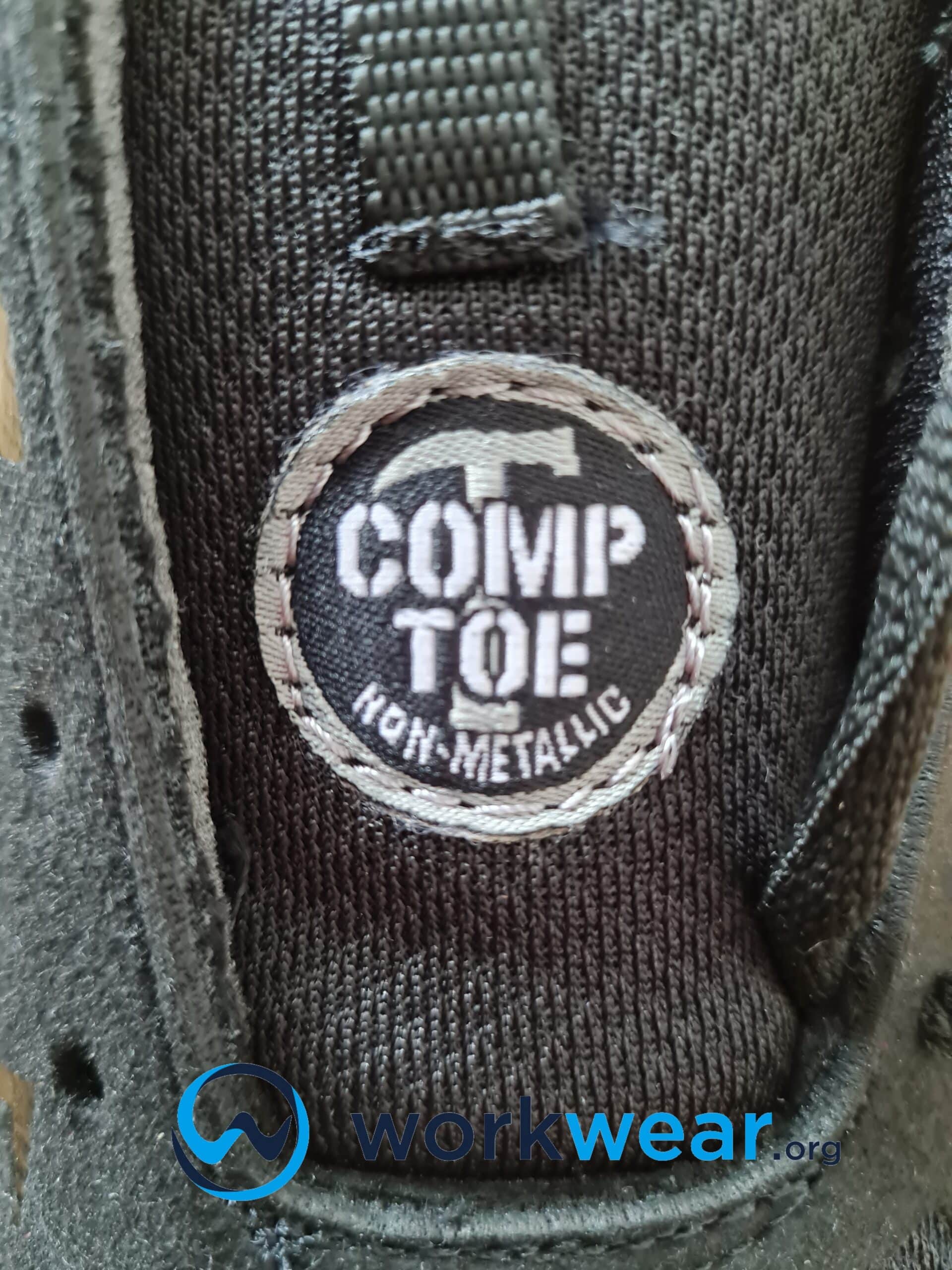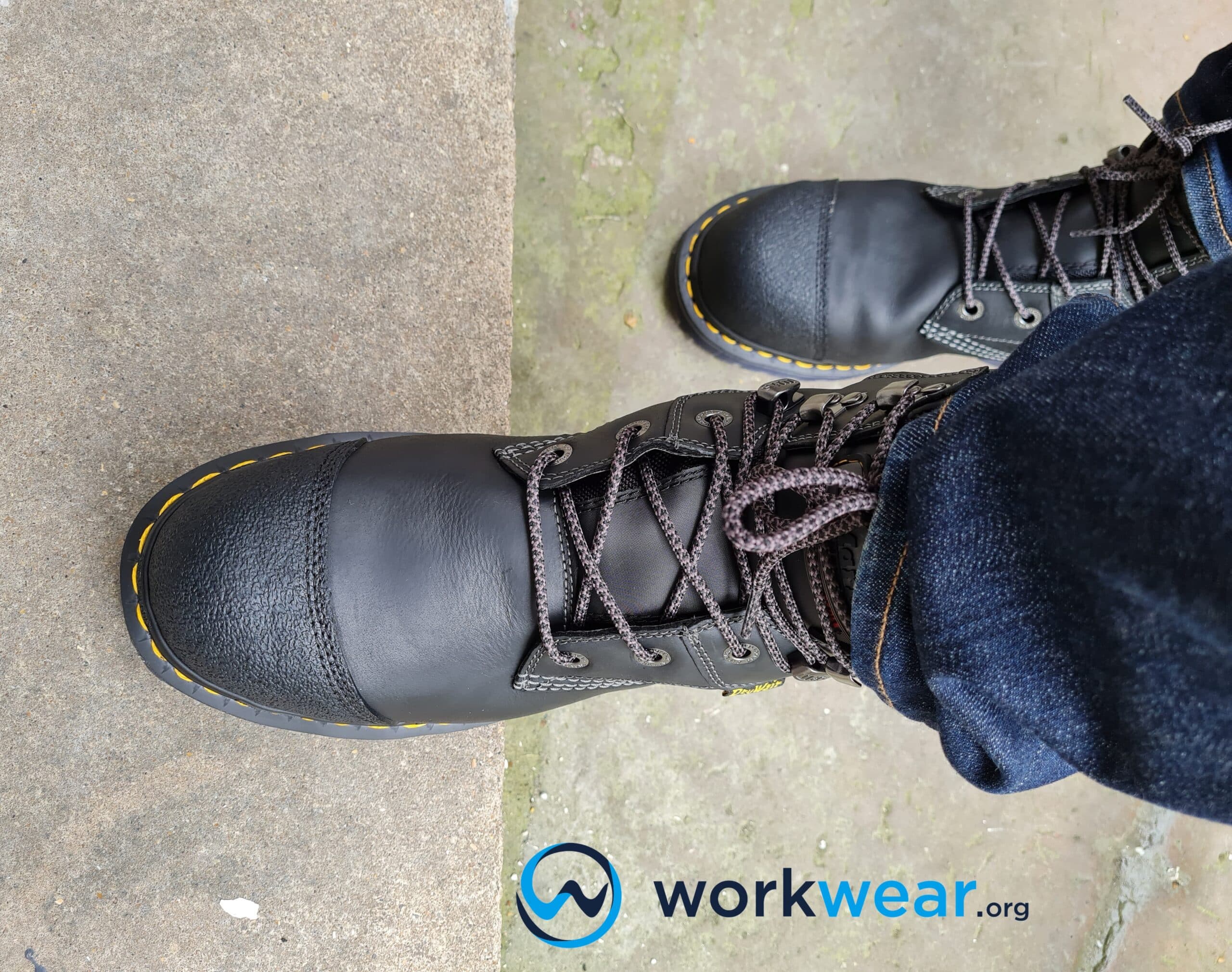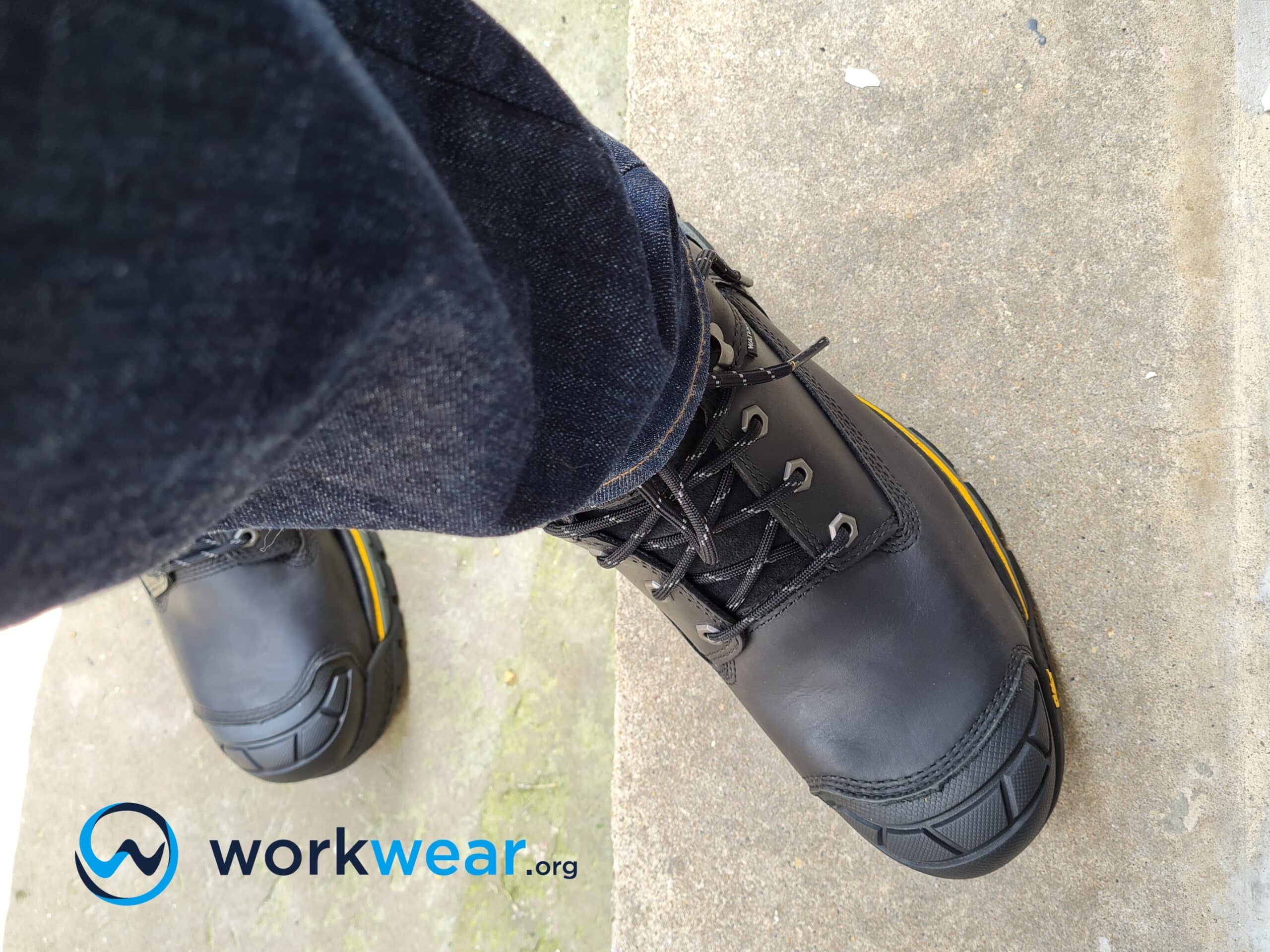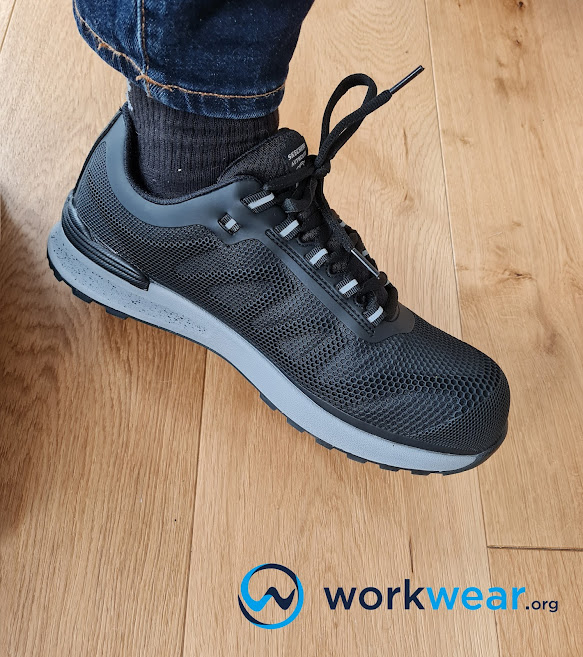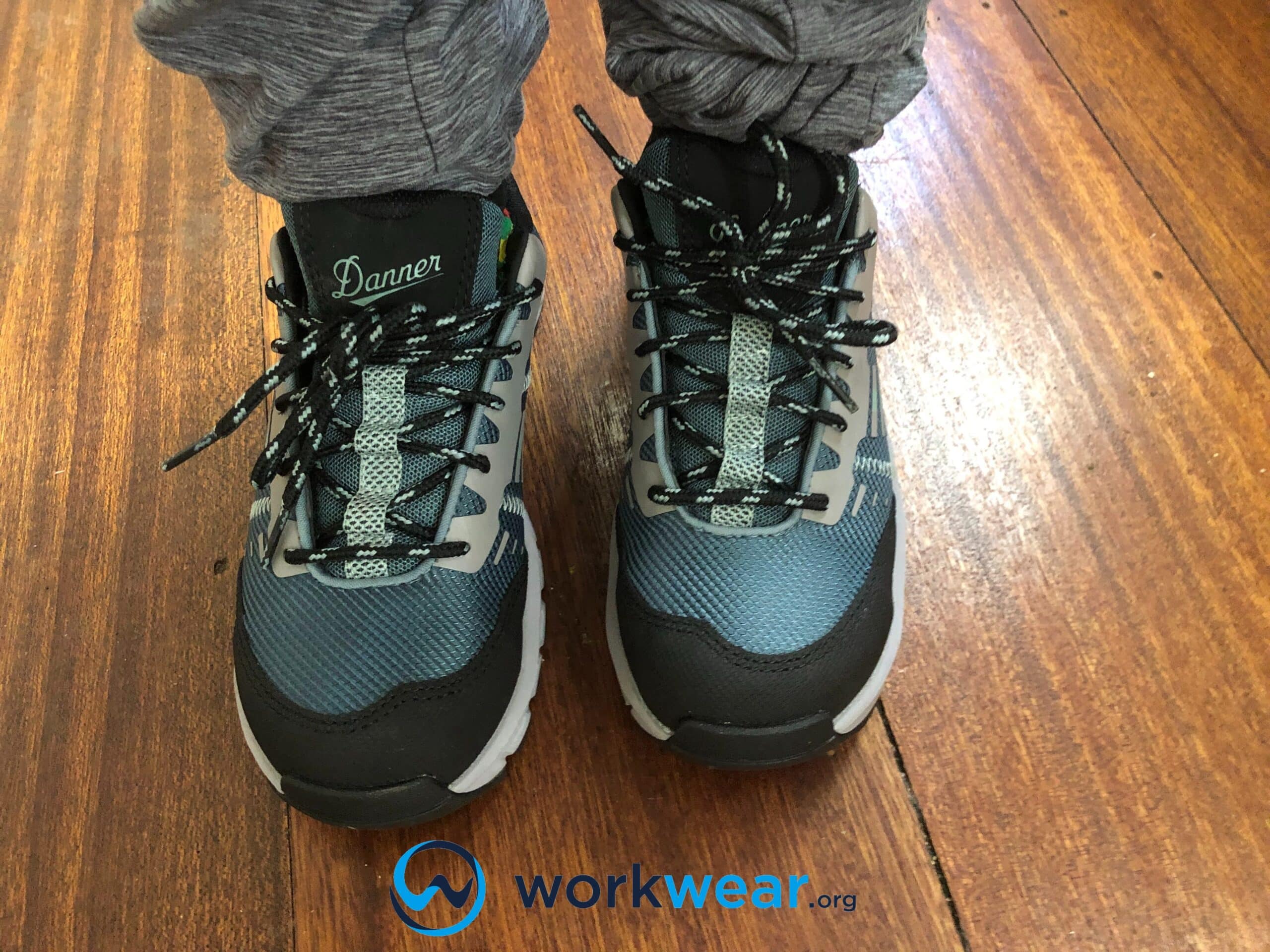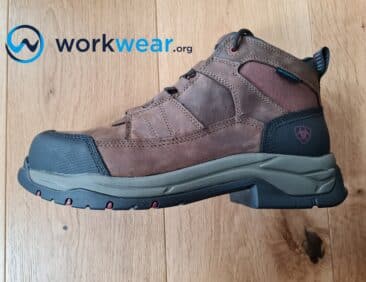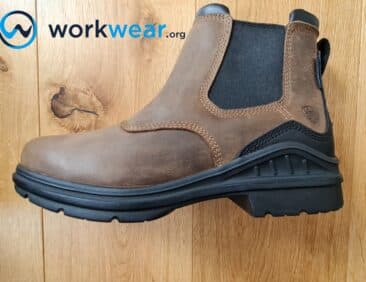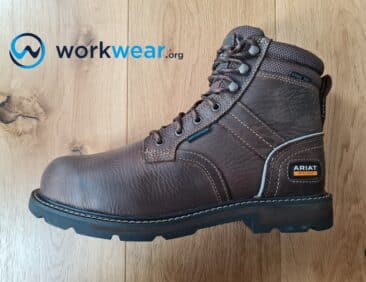Composite Toe Work Boots Explained and Demystified
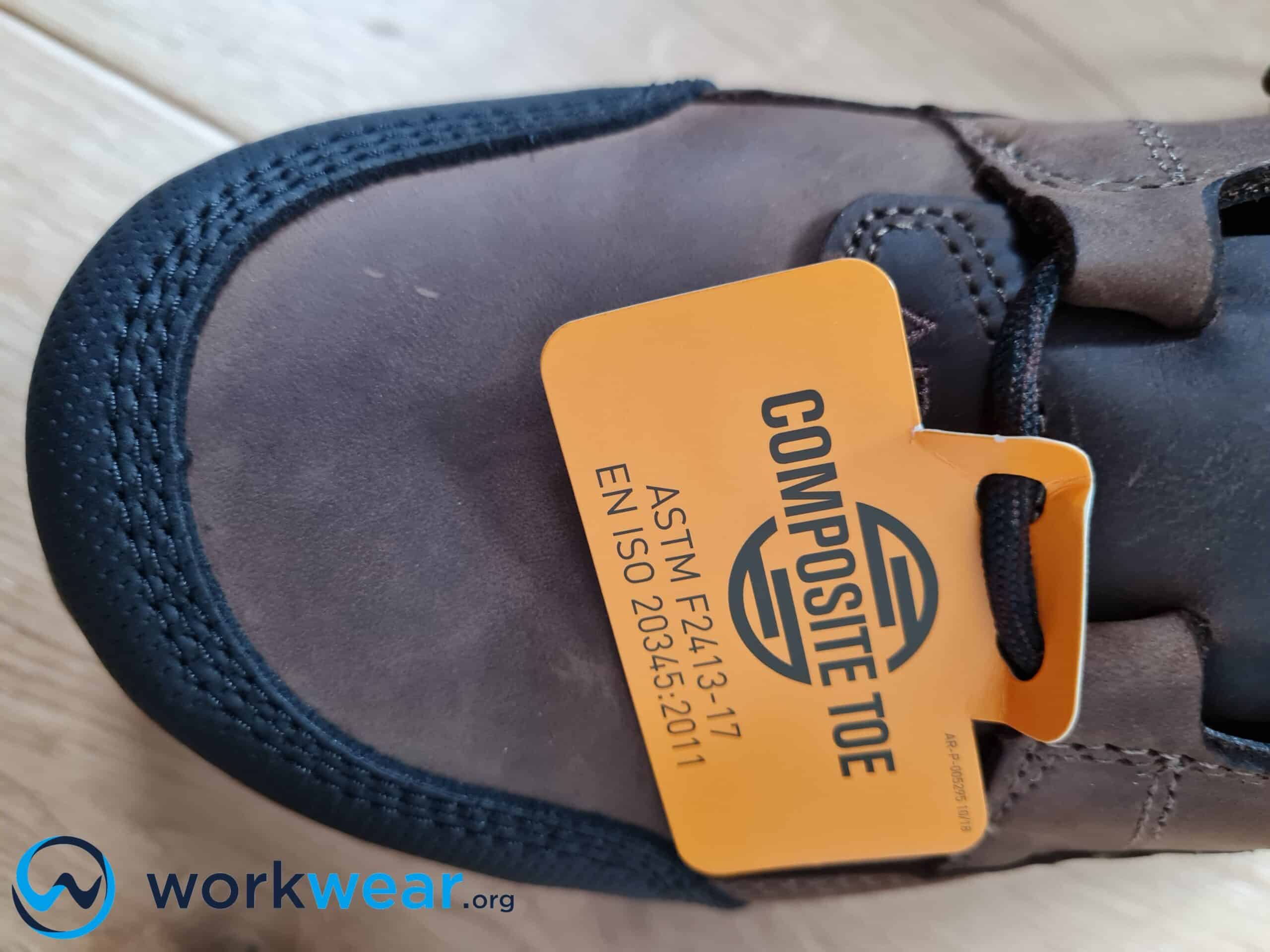
The right gear enables comfortable, efficient movements while doing various activities. In work settings, it is important to make sure that the gear not only delivers comfort but also enhances safety at the same time. Safety toe work boots can be relied on to protect the feet from getting injured by heavy objects that may accidentally drop or roll from significant elevations. Steel toes are popular for safety boots, but other alternatives work just as well – such as composite toe work boots.
Definition of Composite Toe Work Boots
Composite toe work boots come with composite caps to protect the toes from serious harm in case of accidental impact or compression. Instead of steel, a non-metallic material is used to form the toe cap that’s placed into these boots’ toe boxes. Some materials used for composite toe caps include plastic, fiberglass, carbon fiber, and Kevlar. Even if no metal is used on the toe caps, they’re still strong enough to shield the toes against crushing injuries that may result from heavy objects being unintentionally dropped from high areas.
Uses of Composite Toe Work Boots
Just like other safety work boots, composite toe work boots are used in work conditions where there are risks of heavy or large objects dropping onto the feet.
Jobs exposed to impact and compression hazards and prolonged walking/standing
Composite toe work boots are ideal for hazardous work settings that require long hours of walking or standing because they’re much lighter than steel toe boots. These boots will work great for the following jobs:
- Construction workers
- Mechanics
- Carpenters
- Manufacturing personnel
Locations with metal detectors
Composite toe work boots are suitable for use in areas where there are metal detectors. This is because the non-metallic toe caps won’t accidentally trigger the sensors, unlike steel toes that may unintentionally set off the alarms. Composite toe boots that don’t have other metal components are great for professions including:
- Airport security personnel
- Court workers
- Law enforcement personnel
Work conditions exposed to open circuits/live wires
The non-metallic material of composite toe caps has a high electrical resistance. Composite toe work boots don’t conduct electricity and are suitable for professions with frequent exposure to electrically charged objects, providing safer experiences for jobs such as:
- Electricians
- Linemen
- Engineers
Advantages and Disadvantages of Composite Toe Work Boots
Composite toe work boots offer superior benefits, but they also have drawbacks for certain professions or settings, which will be discussed in detail below.
Advantages
Lighter than steel toe boots
Work boots with composite toe caps weigh less than steel toe boots because the non-metallic toe caps are much lighter than their metal counterparts. Since the toe caps don’t contribute much to the total weight, composite toe work boots are suitable partners for walking for long periods as they won’t strain the feet with a heavy feeling. Composite toe work boots – such as the Caterpillar Excavator LT Composite Toe Boot – can keep the feet comfortable for a longer time by not weighing them down with excessive weight.
Won’t accidentally set off metal sensors
Composite toe caps are built with non-metallic materials, such as fiberglass, plastic, or carbon fiber. These toe caps won’t trip metal detectors, making composite toe work boots ideal for use in the sensors’ work areas. These boots will keep the feet safe against heavy rolling or falling objects but won’t hamper normal tasks for jobs that require moving through metal sensors. Those who use composite toe work boots won’t need to stop when passing through metal detectors every now and then, so they can continue working without unnecessary delays.
Not heat or cold conducting
Unlike steel toes, non-metallic toe caps don’t conduct cold or heat. This means that the feet will stay safe and comfortable inside the boots as they won’t be affected by temperature changes in the environment. Composite toe caps protect the feet against compression and impact threats but won’t transfer the extreme heat or cold from the work area to the feet, promoting a safe experience that doesn’t compromise comfort. The feet won’t get freezing cold or scorching hot while working in job sites that are exposed to extreme temperatures, such as working on or near hot asphalt or outdoors in winter.
High electrical resistance
Composite toe work boots have high electrical resistance, especially if they’re rated with electrical hazard protection. They won’t conduct electricity, so they’re suitable for professions that may have exposure to live wires and other electrically charged items.
Ideal for sporty work boot styles
The lightness of composite toe caps makes them ideal for equally lighter work boots, such as those that come with sporty styles and look like sneakers (like the Timberland Reaxion Work Boots) rather than traditional work boots. Those who prefer these athletic silhouettes for work footwear may find that the protective toe caps are (more often) made with composite materials rather than steel toes.
Disadvantages
Typically, more expensive than steel toe boots
The materials used in composite toe caps need more advanced technology to produce compared to steel toes. This typically translates to composite toe work boots having a higher price than steel toe safety boots. Therefore, depending on the material used for the toe caps and other style specifications, composite toe work boots may not be the best option for those after the most affordable safety boots.
Often thicker than steel toes
Composite toe caps may be much thicker than steel toes – unless they’re made with carbon fiber that uses nanotechnology to create thinner toe caps. Other composite materials may need to be thicker to replicate the resistance to impact and compression steel toes can provide. The thicker toe caps can make the boot interior feel bulkier, leaving the toes with minimal space to wiggle comfortably when needed.
May not withstand exceptionally heavy impact
Composite toe caps are built to protect the toes against injuries coming from falling objects. However, they may not withstand extremely heavy compression or impact, especially if the force is sustained for longer, such as when a vehicle accidentally rolls over the foot. Therefore, for jobs that have regular exposure to heavy machinery, large tools, or pieces of equipment that have a high risk of dropping on the feet, steel toe work boots may be a better option for delivering maximum protection than ones with composite toes.
Fewer work boot varieties are available compared to steel toes
Steel toe caps have been used longer than composite toes for safety work boots. Steel toes generally require a lower manufacturing cost, so it’s not surprising that these protective toes are available in more work boot styles and brands compared to composite toes. For those with a specific safety work boot style, it may be easier to find one with steel toes – unless the requirement is for sneaker-like work boots, which more often have built-in composite toe caps.
Comparison Table
| Type of Boots |
Pros |
Cons |
|---|---|---|
| Composite Toe Work Boots |
|
|
| Steel Toe Work Boots |
|
|
Our Testing Experience
Testing composite toe work boots turned out to be quite the treat because we got to experience their remarkable safety features comfortably. The ones that truly stand out – Carhartt Rugged Flex 6-Inch Comp Toe Work Boot, Caterpillar Excavator LT Comp Toe Boot, and Timberland Hypercharge Composite Toe Boot – were all exceptionally comfortable and were able to handle the demands of challenging worksites. These comp toe boots weren’t as weighty as steel toe boots – even the Timberland Hypercharge that was just a bit heavier than the other two because of its tall shaft. These safety boots gave us the confidence to walk around job sites with impact and compression threats, as we knew that our toes had reliable protection against injuries. Meanwhile, the minimized weight helped make the experience much more comfortable and enjoyable, as we didn’t need to lug around extremely heavy boots.
Conclusion
Composite toe work boots offer strong protection against impact or compression risks but don’t have the uncomfortable heaviness associated with steel toe boots. The reduced weight makes comp toe boots the preferred option for those who need to work on their feet for most of the day. This is because the boots don’t painfully drag on the feet while delivering reliable protection against foot injuries that may be caused by dangerous compression or impact. While they offer significant advantages, it’s also important to consider the composite toe work boots’ drawbacks to ensure optimal benefits regarding function, comfort, safety, and price considerations.
FAQs
- Are composite toe work boots the only safe options for working near live wires?
- No – work boots that are equipped with toe caps made with other materials may also be safe to use in such environments. The most important thing to ensure is that the work boots have electrical hazard (EH) protection that works as a secondary safety layer against electrocution when exposed to electrically charged materials. It’s worth noting that even work boots with metallic toes – made with steel or alloy – can be EH-rated.
- Which is better for insulated boots – steel toes or composite toe caps?
- Composite toe caps work better with insulated work boots. This is because the non-metallic material doesn’t transfer heat or cold from the environment to the feet, ensuring proper temperature regulation to keep the feet comfortable. The boot interior can maintain a regulated temperature level as the extremely low or high temperatures in the job site won’t be conducted by the toe caps.
- What makes composite toe caps lighter but bulkier than steel toes?
- The non-metallic material used in composite toe caps doesn’t have the weighty steel structure, resulting in lighter components that don’t significantly add to the boots’ total weight. However, composite toe caps are built with thicker bodies with more layers of non-metallic materials so that they can deliver the same level of resistance to compression and impact as steel toes. In general, the additional layers of materials make composite toes bulkier than steel toe caps.
- Do composite toe caps offer puncture resistance?
- Yes – although this resistance is lower or weaker compared to that offered by steel toe caps. It’s worth noting that the puncture-resistant quality indicated in composite toe work boots generally refers to a penetration-resistant midsole, not the toe caps.
